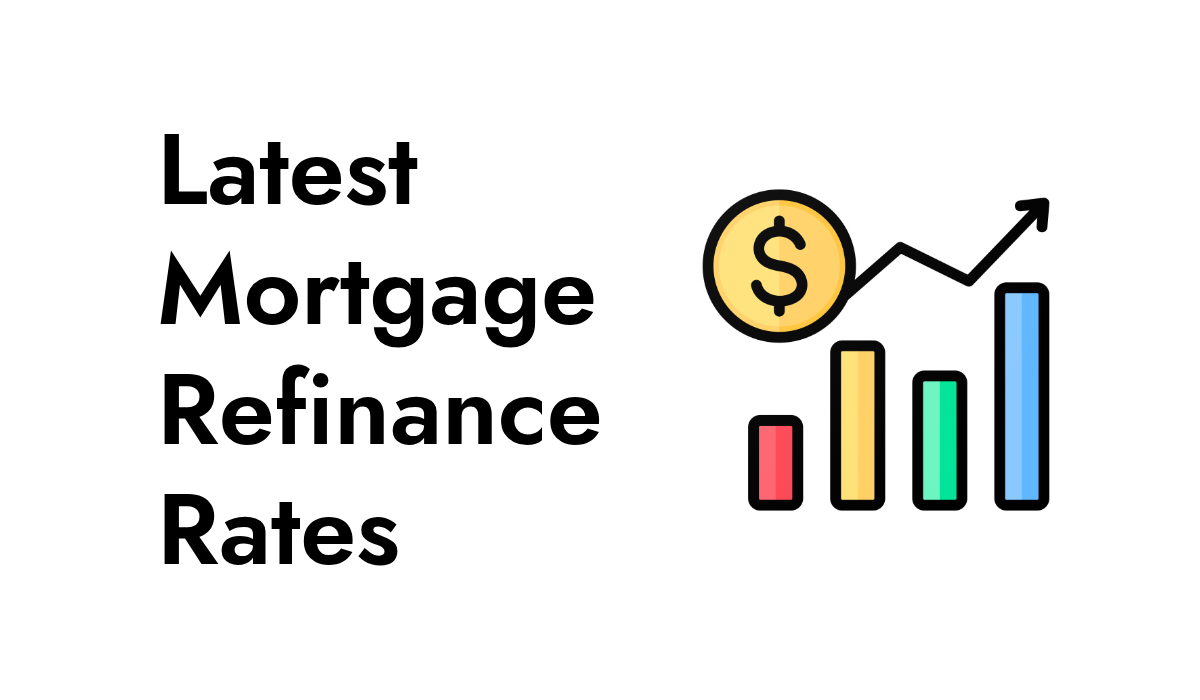The following are the typical annual percentage rates (APR) for 30- and 15-year fixed mortgage refinance, as well as 5/1 ARM refinances:
Current Mortgage Refinance Rates:
The average APR for a 30-year fixed refinance loan has dropped to 7.43% from 7.53% yesterday. This time last week, the 30-year fixed APR was 7.56%. Meanwhile, the average APR for a 15-year fixed refinancing mortgage is 6.60%. Last week at this time, the 15-year fixed-rate mortgage APR was 6.82%.
The average APR for a 30-year fixed-rate jumbo mortgage refinance is 7.32%. Last week, the average APR for a 30-year jumbo loan was 7.48%.

- Est. APR = 9.95% - 14%
- Loan Amount = $150,000 - $3,000,000
- Minimum FICO Score: N/A
5
editorial team. We score based on factors
that are helpful for consumers, such as
how it affects credit scores, the rates and
fees charged, the customer experience,
and responsible lending practices.

- 24/7 Support
- Bridge & Rental Loans
- Equal Housing Opportunity
5
editorial team. We score based on factors
that are helpful for consumers, such as
how it affects credit scores, the rates and
fees charged, the customer experience,
and responsible lending practices.
- Check Your Eligibility
- Equal Housing Opportunity
5
editorial team. We score based on factors
that are helpful for consumers, such as
how it affects credit scores, the rates and
fees charged, the customer experience,
and responsible lending practices.
Current Refinance Interest Rates
| Company | Average Annual Cost | APR | Monthly P&I Per $300,000 |
| 30-Year Fixed | 7.41% | 7.43% | $693 |
| 20-Year Fixed | 7.09% | 7.12% | $781 |
| 15-Year Fixed | 6.57% | 6.60% | $875 |
| 30-Year Jumbo | 7.29% | 7.32% | $685 |
Related: Current Interest Rate for Home Loans – Latest Update
How to get the lowest refinance rate.
The primary purpose of most mortgage refinances is to reduce your interest rate while increasing your savings. Naturally, the lower the rate, the greater the savings.
However, just because a lender offers a specific rate does not guarantee that you will qualify for it. Lenders frequently promote their lowest rates accessible, but those prices are reserved for borrowers who meet numerous criteria, such as having a good credit score and a low loan-to-value ratio.
Borrowers can put themselves in the greatest position to acquire the lowest rate by undertaking the following three simple things:
Increase your credit score.
If your credit score is less than 760, you may not be eligible for the best rates that lenders provide. That is not to say you can’t receive a lower rate than you presently have, but there is potential to improve your credit and increase your savings. Before applying for a mortgage refinance, review your credit score and obtain a copy of your credit report.
If you discover any errors on your credit report, notify both the credit agency and the entity that created the error as soon as possible. To modify your credit record and credit score, both parties must correct the information.
You can improve your credit score by paying off credit card debt and using your cards less frequently. If you use credit cards for rewards and points, attempt to pay them off right away—don’t wait for your monthly statement to arrive because your credit score might alter on daily basis.
Avoid applying for additional lines of credit before applying for a mortgage refinance, as credit applications can lower your score. However, completing multiple mortgage applications in an attempt to obtain the lowest available rate will not harm your credit score.
numerous mortgage applications submitted during the same time period are counted as a single application by credit bureaus because they are considered comparison shopping rather than attempting to obtain numerous lines of credit.
Shop around for the best price.
The second step in ensuring you obtain the best cost possible is to search around. Make sure to compare the APR between lenders rather than just the rate. The APR is the entire cost of your mortgage, which varies by lender and includes closing charges if rolled into your loan.
Before making a decision, make sure to evaluate offers from at least three lenders. When comparing interest rates and APRs, consider these two scenarios:
If you intend to stay in your house for an extended period of time, finding the lowest mortgage rate may be more significant than paying the lowest closing expenses.
If you don’t intend to stay for more than a few years, you should review the lender’s loan projections, which will show you the expected five-year cost. Select the offer with the lowest starting price tag.
Keep the loan-to-value ratio low
Finally, a lower loan-to-value (LTV) ratio results in a lower interest rate. If you don’t have to take cash out of your property to refinancing, you might want to avoid doing so because it will increase your LTV and likely result in a higher interest rate.
The loan-to-value ratio compares the amount of finance utilized to purchase a home to the worth of the residence. The maximum LTV allowed when refinancing varies depending on the type of property, whether the loan is fixed-rate or adjustable-rate mortgage (ARM), and whether you’re undertaking a regular or cash-out refinance.
How Much Does It Cost to Refinance Your Mortgage?
Mortgage refinancing, like a purchase loan, contains a number of costs that vary depending on the loan type, lender, and third-party services.
Here are some general figures for the most common refinancing costs.
- The application fee. $0-$500
- Attorney’s fees. $500-$1,000
- Discount points. 0%-3%
- Flood certification. $15 to $25
- Home appraisals range from $300-$700
- Fees for originating transactions. 0.5%-2%
- Recording fees. $125
- Tax service costs: Varies
- Insurance and search. $700-$900
FHA streamline refinance loans additionally demand an upfront mortgage insurance payment (MIP) of up to 1.75% of the base loan amount, followed by an annual MIP of up to 1.05% of the base loan amount.
Certain lender expenses can be negotiated, such as having the underwriting and processing fees waived. Government and third-party fees, such as taxes, legal review fees, and home appraisals, cannot be bargained or avoided.

 Read More
Read More 




